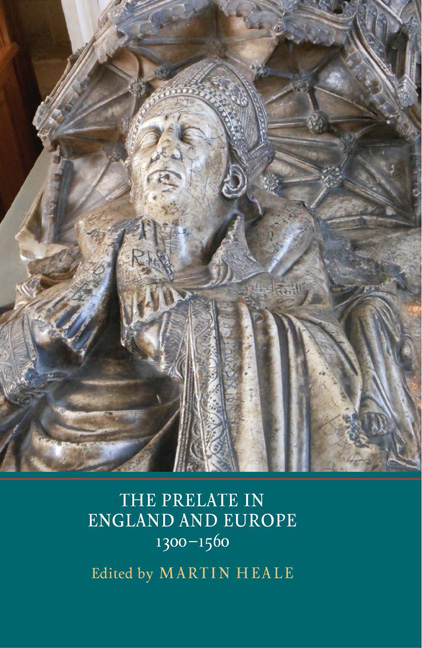Book contents
- Frontmatter
- CONTENTS
- List of Illustrations
- List of Contributors
- Preface and Acknowledgements
- List of Abbreviations
- Introduction
- Part I Prelates and Power
- Part II Patronage and Learning
- Part III Identity and Display
- Treasure, Material Possessions and the Bishops of Late Medieval England
- Episcopal Embodiment: the Tombs and Seals of Bishops in Medieval England and Wales
- Cistercian Abbots as Patrons of Art and Architecture: Northern England in the Late Middle Ages
- Cistercian Abbots in Late Medieval Central Europe: Between the Cloister and the World
- Part IV Attitudes towards Prelacy
- Index of People and Places
- Index of Subjects
- YORK MEDIEVAL PRESS: PUBLICATIONS
Cistercian Abbots as Patrons of Art and Architecture: Northern England in the Late Middle Ages
from Part III - Identity and Display
Published online by Cambridge University Press: 05 November 2014
- Frontmatter
- CONTENTS
- List of Illustrations
- List of Contributors
- Preface and Acknowledgements
- List of Abbreviations
- Introduction
- Part I Prelates and Power
- Part II Patronage and Learning
- Part III Identity and Display
- Treasure, Material Possessions and the Bishops of Late Medieval England
- Episcopal Embodiment: the Tombs and Seals of Bishops in Medieval England and Wales
- Cistercian Abbots as Patrons of Art and Architecture: Northern England in the Late Middle Ages
- Cistercian Abbots in Late Medieval Central Europe: Between the Cloister and the World
- Part IV Attitudes towards Prelacy
- Index of People and Places
- Index of Subjects
- YORK MEDIEVAL PRESS: PUBLICATIONS
Summary
The patronage of Cistercian abbots in the late Middle Ages has often been judged harshly by scholars. Nikolaus Pevsner famously damned the lodging built by Abbot Thomas Chard (c. 1505–39) at Forde Abbey, Dorset, as being on a scale ‘to justify the Reformation and Dissolution’. His comments are reflective of a wider English historiographical tradition that has tended to disparage the monastic life in the late Middle Ages, with patronage of art and architecture often interpreted as evidence of the decline and spiritual malaise into which the religious orders, especially the Cistercians, had fallen. There can be no doubting that the late Middle Ages was a period of change for the Cistercians and other religious orders. Whether it was also one of decline has been questioned by a recent generation of scholars, who have found evidence of reform, renewal and vibrancy.
Cistercian monasteries in the late Middle Ages were quite unlike those of the twelfth century. Their architecture and material and visual cultures lacked the austerity which so defined the order's art and architecture in its early days. However, it is important to recognize that the order's attitude towards its material and visual cultures evolved considerably over the course of the Middle Ages. Indeed, by c. 1300 earlier prohibitions on matters artistic such as bell towers, images, coloured and pictorial window glass and the possession of sumptuous vestments and altar plate had largely ceased to apply.
- Type
- Chapter
- Information
- The Prelate in England and Europe, 1300–1560 , pp. 215 - 239Publisher: Boydell & BrewerPrint publication year: 2014



